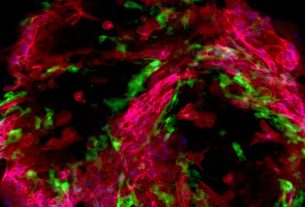Thirty-one new technology awards will equip scientists with the infrastructure they need to answer some of the most pressing challenges in biology and beyond.
These include imaging tools that reveal how cells behave in real time, to a mobile platform that tracks carbon movement on farms.
The awards are funded by the Biotechnology and Biological Sciences Research Council (BBSRC) to the tune of £27 million.
World class-infrastructure
They have been made under BBSRC’s ALERT scheme, which is designed to ensure UK bioscience researchers have access to the latest mid-range equipment and technical expertise.
This ranges from funding upgrades and ‘workhorse’ equipment to cutting-edge technologies and lab-to-field platforms.
Dr Amanda Collis, Executive Director for Research Strategy and Programmes at BBSRC, said:
This funding strengthens the UK’s bioscience capability by investing in advanced research equipment, enabling transformative science and fostering collaboration. In doing this, we are supporting world-class infrastructure that drives discovery and innovation essential to deliver real-world impacts and transform lives.
Tackling urgent real-world challenges
The technologies funded through ALERT will enable transformative outcomes.
Unlocking new approaches to tissue regeneration
A dedicated axolotl research facility at the University of Edinburgh, the only one in the UK, will help researchers investigate how these rare amphibians regenerate limbs, spinal cords and organs.
This could lead to long-term breakthroughs in how we treat injuries and degenerative diseases.
Supporting sustainable agriculture and net zero
A mobile carbon flux tracking platform at Lancaster University will help researchers measure how carbon moves through UK farmland.
This will provide critical data for improving soil health, land use policy and climate-smart farming practices.
Exploring brain function across the lifespan
The University of Birmingham will establish a wearable brain-imaging platform to track neural activity from infancy to old age in real-world settings.
By leveraging an emerging quantum technology to overcome the limitations of existing brain imaging methods, this breakthrough could transform our understanding of brain development, social interaction, education and future healthcare.
Improving human health and resilience
New high-resolution imaging systems and advanced analytical tools across the UK will enhance our understanding of fundamental biology and immune responses to help tackle cancer, neurological and infectious disease and antimicrobial resistance.
Boosting food security and nutrition
Upgraded nuclear magnetic resonance (NMR) spectroscopy and genomics platforms will support research into crop development, food digestion and the design of future foods with targeted health benefits.
Building capacity across the UK
The ALERT programme supports the wider bioscience ecosystem, with nine of the funded projects being led by research technical professionals.
These roles are critical in ensuring complex research infrastructure is expertly maintained, operated and embedded into UK research environments.
ALERT in action
Launched in 2013, ALERT has supported more than 300 awards across the UK, providing the bioscience community with access to essential equipment that drives innovation and delivers research with impact.
Weather in the lab
A new £1.5 million Global Meteorological Simulator has been launched at the University of Exeter, creating a groundbreaking way to ‘bring the weather into the lab’.
This state-of-the-art facility can replicate wind, rain, mist and future climate scenarios, enabling researchers to study how crops and pollinators respond to changing conditions.
Early projects include investigating how rice diseases spread in tropical climates and how bees adapt to abrupt weather changes.
Funded by BBSRC’s ALERT 2022 scheme, with additional support from the University of Exeter, the simulator is one of only a few in the world capable of combining multiple weather variables simultaneously.
By enabling experiments that would be impossible in the field, it provides scientists with a powerful tool to tackle urgent challenges in food security, crop resilience and pollination under climate change.
Skin-swab breakthrough for Parkinson’s
A breakthrough in Parkinson’s disease diagnosis is emerging from The University of Manchester, powered by BBSRC ALERT funding awarded in 2014.
Researchers have developed a simple skin-swab test that can identify Parkinson’s far earlier and more accurately than current methods.
The funding enabled the purchase of cutting-edge mass spectrometry equipment, allowing researchers to analyse chemical changes in sebum, the oily substance produced by skin.
Using high-resolution mass spectrometry, the team uncovered unique molecular signatures linked to Parkinson’s, creating a new diagnostic pathway.
The impact to date has been significant:
- the research has moved from fundamental science to a diagnostic tool now being trialled in NHS clinics
- it demonstrates how BBSRC-funded infrastructure enables discovery research that can translate into health innovation
- The University of Manchester is collaborating with healthcare partners to bring the test into routine practice, with the potential to transform lives and livelihoods through early diagnosis for thousands of patients
Miniature models, major breakthroughs
In 2022, BBSRC’s ALERT funding enabled the Royal Veterinary College to launch a pioneering organ-on-a-chip facility, now central to their new Centre for Vaccinology and Regenerative Medicine.
This cutting-edge microfluidic technology replicates animal tissue environments, such as barriers and organs, within miniature chips to model how diseases, vaccines and therapies interact in realistic physiological contexts.
The facility supports research on host-pathogen interactions, vaccine development and regenerative medicine.
Further, it significantly reduces reliance on live animal testing, advancing both scientific understanding and the 3Rs principles (replacement, reduction and refinement).
BlueCryo powers COVID discovery
In 2017, BBSRC’s ALERT scheme provided critical support to establish BlueCryo, a high-performance computing cluster at the University of Bristol dedicated to cryo-EM image processing.
This advanced infrastructure significantly accelerated 3D structural biology analysis across multiple research domains.
The real-world impact of this investment became clear in March 2020, during the COVID-19 pandemic, when Bristol researchers leveraged cryo-EM supported by BlueCryo to unravel the structure of the SARS-CoV-2 spike glycoprotein.
This breakthrough revealed a conserved fatty acid binding pocket across deadly coronaviruses, including SARS-CoV, MERS and Omicron strains.
The discovery is now informing the development of pan-coronavirus antivirals, offering therapeutics that could address both current and future outbreaks.
BlueCryo demonstrates how strategic infrastructure funding can enable rapid, globally relevant scientific advances.
Harnessing the power of bioscience
The 31 latest projects funded through ALERT play a vital role in driving the ambitions set out in BBSRC’s Forward Look for UK Bioscience.
This document calls for strategic, future-facing investment in the technologies and skills that underpin discovery and challenge-led research.
Further information
The ALERT24 projects
The full list of projects funded by BBSRC in this latest round includes:
- an axolotl pipeline for regeneration, development, stem cell and cancer research (Project lead: Aida Rodrigo Albors, University of Edinburgh)
- new capabilities for mass spectrometry-based structural biology at the University of Leeds (Project lead: Antonio Calabrese, University of Leeds)
- next-generation high resolution mass spectrometry at the University of Edinburgh (Project lead: David Clarke, University of Edinburgh)
- system upgrade for a Thermo Fisher GLACIOS 200Kv Cryo Electron Microscope (Project lead: Richard Collins, The University of Manchester)
- increasing mass spectrometry functionality and capacity for the Cambridge biological sciences community (Project lead: Michael Deery, University of Cambridge)
- cryo-fluorescence tomography: a new paradigm for ex vivo imaging (Project lead: Katie Dexter, University of Southampton)
- dynamics and interplay of protein modifications (Project lead: Claire Eyers, University of Liverpool)
- a broadly accessible and versatile spinning disc microscope to probe biological processes across temporal and spatial scales (Project lead: Erik Griffin, University of Warwick)
- a communal focused ion beam scanning electron microscope (FIB-SEM) for in situ structural biology (Project lead: Sebastian Guettler, Institute of Cancer Research)
- new mass spectrometry instrumentation for improved biomolecular characterisation (Project lead: Stuart Haslam, Imperial College London)
- advancing bioscience research in North East Scotland with a high-content and high-throughput imaging platform (Project lead: Emilie Hollville, University of Aberdeen)
- single-molecule studies of the dynamics of macromolecular complexes using optical-force measurements and fluorescence imaging (Project lead: Andrew Hudson, University of Leicester)
- good vibrations: visualising life with multiphoton/coherent Raman scattering microscopy (Project lead: Alison Hulme, University of Edinburgh)
- an open access advanced stimulated emission depletion (STED) super resolution microscope for sub-cellular imaging (Project lead: Veera Venkata Gopala Krishna Inavalli, University of Southampton)
- establishing a multi-view and multi-position light-sheet microscopy platform for high-throughput in toto live imaging (Project lead: Kenzo Ivanovitch, University College London)
- a multipurpose spinning disk system for Bristol’s Wolfson Bioimaging Facility (Project lead: Mark Jepson, University of Bristol)
- BrillFM: a correlative micro and spectroscope to optically probe cellular dynamics and biomechanics (Project lead: Alex Johnson, University of Exeter)
- mobile platform for tracking carbon through agri-ecosystems (Project lead: David Johnson, Lancaster University)
- a VR-modularised lattice light sheet microscope for deep imaging of 3D biosystems (Project lead: Himanshu Kaul, University of Leicester)
- high-field NMR for biosciences in the East of England (Project lead: Yaroslav Khimyak, University of East Anglia)
- integrating cell image analysis into sorting approaches to revolutionise cell biology at The University of Manchester (Project lead: Joanne Konkel, The University of Manchester)
- naturalistic lifespan electrophysiology platform for human brain imaging (Project lead: Anna Kowalczyk, University of Birmingham)
- an advanced spatial transcriptomics platform for the UK bioscience community (Project lead: Iain Macaulay, Earlham Institute)
- live-cell super-resolution imaging system (Project lead: Peter March, The University of Manchester)
- molecular imaging of in situ cellular machinery by cryo focused ion beam milling (Project lead: Carolyn Moores, Birkbeck, University of London)
- a spinning disk super-resolution microscope for high throughput organ mapping and ultra-fast live cell imaging of signalling networks (Project lead: Iain Porter, University of Edinburgh)
- concurrent force sensing and fluorescence imaging: enabling the next generation of single molecule biophysics research across faculties at Leeds (Project lead: Ralf Richter, University of Leeds)
- C-Trap for the North West: visualisation of single molecule biomolecular dynamics for the biosciences (Project lead: Nicholas Robinson, Lancaster University)
- high resolution mass spectrometer for structural biology and omics (Project lead: Nicholas Smirnoff, University of Exeter)
- expanding the proteomics and establishing single-cell capabilities for the UCL mass spectrometry science technology platform (Project lead: Konstantinos Thalassinos, University College London)
- an automated multimode plate reader platform for large-scale time-course measurements of microbes (Project lead: Edward Wallace, University of Edinburgh)



